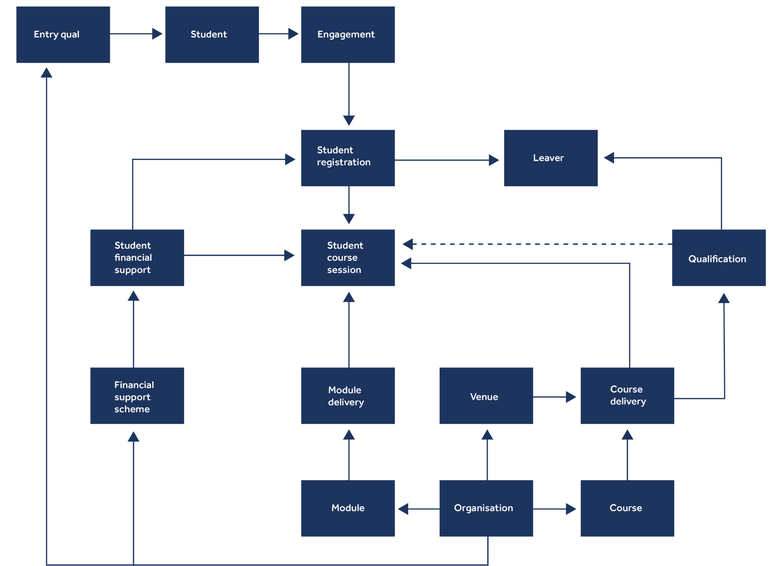Background
The Higher Education Statistics Agency (HESA) is the official agency for the collection, analysis and dissemination of quantitative information about HE in the UK. Legally, we must send an annual return of data to Higher Education funding bodies i.e. SFC. HESA collates this information on their behalf.
The HESA Data Futures project allows for the collection system will be always open, thus allowing the continuous submission and quality assurance of data. The benefit of this is timely, high quality data which will improve management information for universities and the sector as a whole, more efficient data return and quality assurance for universities, and better alignment of regulatory and statutory data returns for the sector.
What Data Do We Provide?
At the end of each academic year, we collate information from the 1st August to 31st July, which includes:
- Personalised data about students
- Data about the curriculum

When Does Data Futures Begin?
The University will be collecting student data in the new Data Futures format from 1st August 2022. The collection system will be always open, allowing the continuous submission and quality assurance of data. Review and sign-off periods are built into the cycle and data will be available shortly after at pre-determined dissemination points.
These changes require modifications to many systems at the University, as a number of data items need to be captured, as well as requiring a change to the current HESA data processing system, which compiles the data so it can be submitted.
HESA are still working through the details of the quality and validation rules, so the full scope of work is yet to be defined. To date, internal analysis indicates that:
- New data items need to be captured
- Changes to data process are required
- Other Changes
How does this affect me?
Each of the new data items requires a change to the SRS. As a result, other projects/system changes may be stalled whilst HESA updates are being made .
There will also be changes required to Gateway systems (such as Student Hub and Online Education Management System) and interfaces. This may limit new functionality being implemented in these systems.
Due to the underpinning technologies, it is not possible to have multiple staff working on the same part of SRS simultaneously, so adding additional staff resource will not address these challenges.
The complexity of the changes and new data items to be collected may impact some existing business processes. This may so change how we process information about students.
HESA Project Timelines
HESA have experienced various challenges during the implementation of the project, which means that the original timescales have been adjusted. The first year of submitting the new Data Futures return is 2022/23.

•Requirements Analysis
•Data Gap Assessment
•Gateway Systems Development Phase 1
•Specification development
•Test Phase 1
• Gateway Development deployment to Live
•Analysis of Remaining Data Model
•Development Phase 2
•Specification/Test cycles to follow academic year.
•Specification of HESA XML Compilation Tool
Further Information
For further information please refer to the HESA microsite for Data Futures.
